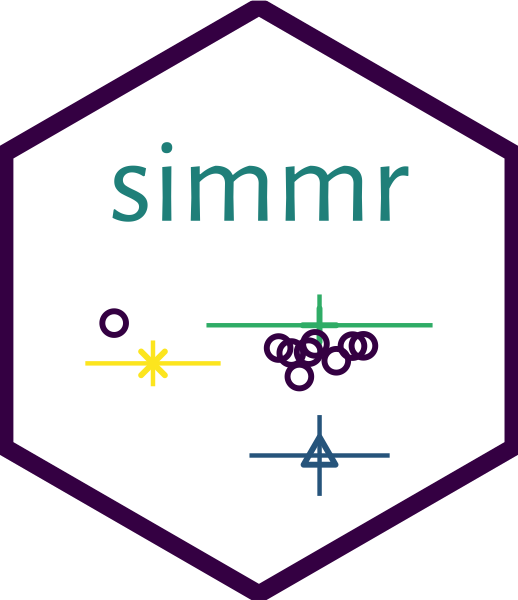Hi Andrew,
I've got yet another question about simmr. For example, if I run this model (script below) with 2 mixture samples, I get a contibution of seagrass of 3-81% (95% CI). This lower bound of the 95% CI sounds a bit low to me given the position of the mixtures on the d13C-d15N plane... Anyway, If I then go and run the model using simmr solo based on 1 only sample, that has d13C and d15N that correspond to the average of those 2 initial samples (d13C = -11.4, d15N=8.15), I get a much more constrained result on seagrass contribution: 64-84%. Looking at the plot, that one makes more sense. I realise the source polygon in this case is a bit funny, but can't explain the large difference in results, can you help please?
THANK YOU!
mix = matrix(c(-11.8, -11.0, 8.1, 8.2), ncol=2,nrow=2)
colnames(mix) = c('d13C','d15N')
s_names = c("Seagrass", "Mangroves","MPB", "Saltmarsh")
s_means = matrix(c(-10.1,-27.3,-19.2,-25.7,1.4,2.3,3.4,6.0), ncol=2, nrow=4)
s_sds = matrix(c(0.3, 1.5, 1.5, 0.7, 2.4, 0.2, 1.5, 2.1), ncol=2, nrow=4)
c_means = matrix(c(1.7, 1.7, 1.7, 1.7, 5.6, 5.6, 5.6, 5.6), ncol=2, nrow=4)
c_sds = matrix(c(0.5, 0.5, 0.5, 0.5, 0.5, 0.5, 0.5, 0.5), ncol=2, nrow=4)
simmr_in = simmr_load(mixtures=mix,
source_names=s_names,
source_means=s_means,
source_sds=s_sds,
correction_means=c_means,
correction_sds=c_sds)
simmr_out = simmr_mcmc(simmr_in)
plot(simmr_in,xlab=expression(paste(delta^13, "C (\u2030)",sep="")),
ylab=expression(paste(delta^15, "N (\u2030)",sep="")),
title='Aldrichetta (P Davis) Summer')
summary(simmr_out,type='statistics')
summary(simmr_out,type='quantiles')



